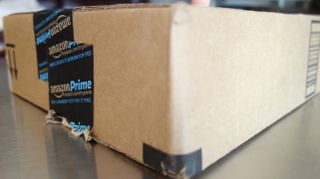How predictive marketing might give flight to Amazon's 'anticipatory shipping' service
Buying before trying

Retail giant Amazon recently attracted attention for its plans to ship goods to customers using bird-like robotic drones.
Collective brows raised even higher when a patent revealed plans for an "anticipatory shipping" service, designed to send customers shipments of items based on the time they'd spent browsing products, their visits to a listing, previous purchase habits and other metrics.
Paul Gibson, Regional Director EMEA at marketing and analytics software company AgilOne, talks to TRPro about the technology that Amazon might use to achieve this seemingly psychic feat.
TechRadar Pro: What do you make of Amazon's recent patent announcement?
Paul Gibson: Amazon is one of the best users of predictive marketing, and utilise their vast resources and budgets to achieve a great understanding of their customers behaviour, and therefore deliver relevant, effective messaging.
This patent is yet another example of the impressive way they utilise this powerful medium, and would certainly overcome the often criticized delay between ordering and receiving goods. However, it could open the door for abuse, if people realize they can get free product just by browsing on the site.
TRP: Why is Amazon always leading the way on predictive marketing?
Are you a pro? Subscribe to our newsletter
Sign up to the TechRadar Pro newsletter to get all the top news, opinion, features and guidance your business needs to succeed!
PG: Having vast budgets and resources has enabled Amazon to fully harness all the elements of predictive marketing, and has lead to them becoming experts in customer retention.
They have built systems, and algorithms that are able to collect data at every instance, from every touch-point, using a variety of campaigns logging your actions when you: search for something, purchase something, abandon your cart, send something back and even unsubscribe from their emails.
Amazon are then able to understand your preferences, behaviour and likely next steps and then turn all this information into personal messages tailored to your responses. This gives them a unique place in the market, as traditionally this has been out of the reach of smaller businesses.
TRP: Can other companies use predictive analytics to do this?
PG: Right now, yes, and this is really exciting! Few companies have the budget and resources of Amazon, so this capability has traditionally been out of reach for all but the largest enterprises.
However, due to the recent advancements in SaaS Predictive Marketing technologies, it is now possible for any-sized retail organisation - including those with a mix of on-line and traditional bricks and mortar operations - to harness this level of sophistication.
This helps them to gain a consolidated 360-degree view of the multiple customer touch-points and delivering unrivalled data science, which in turn leads to more effective marketing, loyal repeat buyers and ultimately improved bottom line.
TRP: Is software-as-a-service (SaaS) predictive marketing technology expensive to run?
PG: On the contrary, Cloud technology is helping to bring predictive marketing within reach of most businesses.
Companies do not need to have vast data centres, nor do they need to spend years developing new technology, and adoption of true customer insight and relevance now takes weeks, rather than months or years.
Historically, combining multiple data sources, and adding the required science was a time consuming, manually intensive and costly exercise, but SaaS predictive marketing solutions do all the heavy lifting, allowing marketers to concentrate on marketing.
TRP: How useful do you think the technology being used by Amazon will be to consumers?
PG: Of course, the actual idea behind delivering something someone has not yet purchased could confuse, and maybe even scare off a potential buyer who may simply be comparing and having already purchased the goods elsewhere.
But, in terms of receiving products which someone might need, for example if a retailer knew your printer cartridge needs replacing, this technology could prove to be very useful to consumers. It would mean you would never run out of a product which needs regular replacement.

Désiré has been musing and writing about technology during a career spanning four decades. He dabbled in website builders and web hosting when DHTML and frames were in vogue and started narrating about the impact of technology on society just before the start of the Y2K hysteria at the turn of the last millennium.
Most Popular

